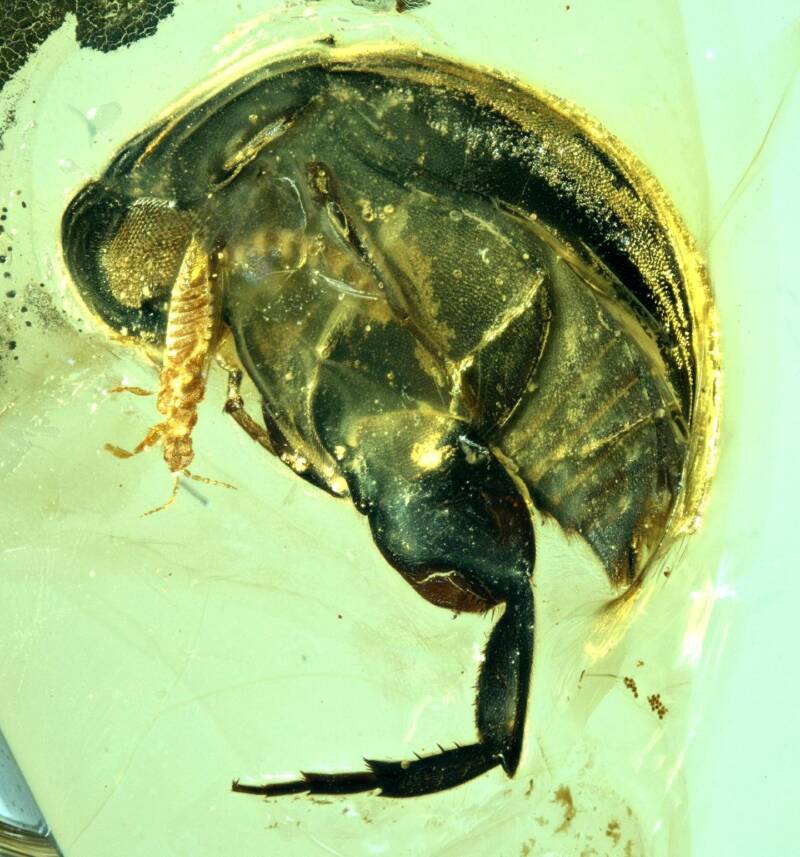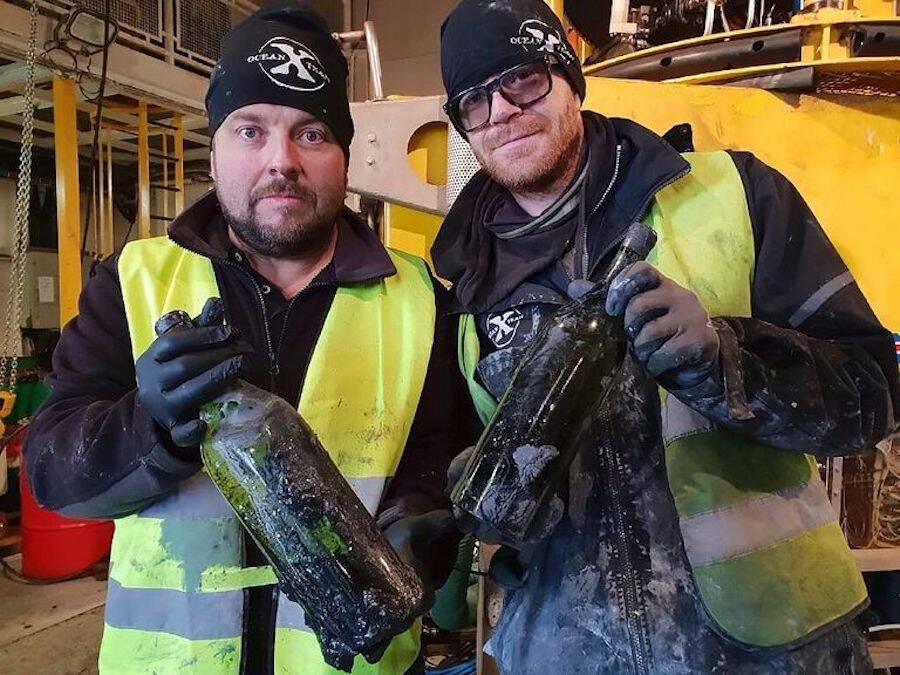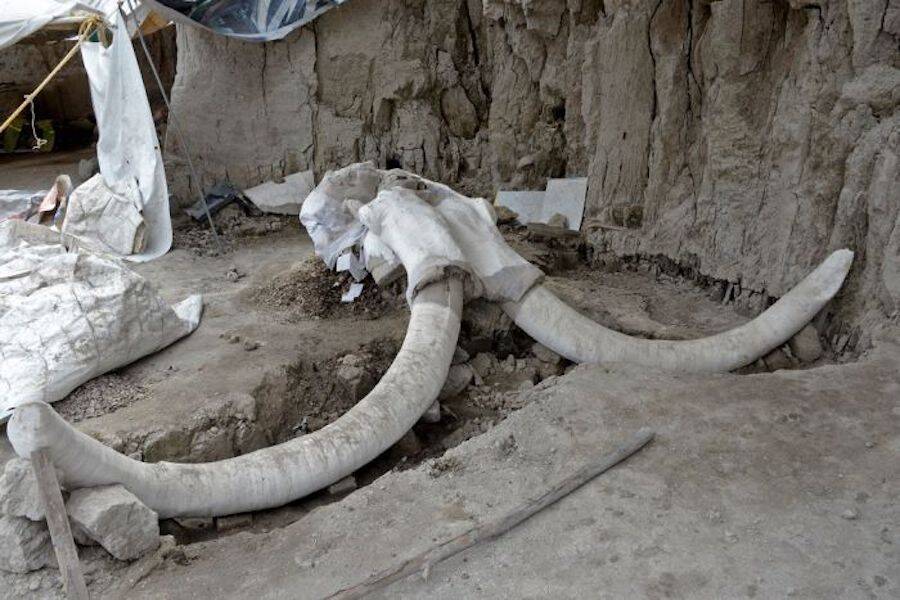Prehistoric beetle found preserved in amber, century-old booze recovered from shipwreck, mammoth skeletons discovered in human-made traps.
This Fossilized Beetle May Have Been One Of The First Insects To Pollinate — 99 Million Years Ago

David Dilcher et alAngimordella burmitina is a newly discovered ancient beetle species, found trapped inside fossilized amber.
While the significance of pollination — and pollinating insects — has become common knowledge, scientists have long struggled to estimate when the phenomenon of pollination first began on Earth. A popular guess used to be about 49 million years ago.
But scientists have found recent evidence that suggests pollination of plants on Earth began much earlier than that. An international team of researchers from China and the United States uncovered a prehistoric beetle specimen trapped inside amber, and on that specimen were tiny specs of pollen.
See more here.
Divers Just Saved 900 Bottles Of 100-Year-Old Booze From A World War I Shipwreck

Ocean XThe cargo was retrieved from the Baltic Sea between Sweden and Finland.
The Swedish dive team Ocean X just recovered 900 bottles of century-old cognac and liqueur from the bottom of the Baltic Sea. The ship carrying this luxurious cargo was sunk by a German U-boat in 1917, leaving its contents lost in the ocean for more than 100 years.
This shipment was originally intended for Russia’s aristocracy — perhaps even for Czar Nicholas II. It was only a year later that he was executed by the Communist government.
The 15 salvaged cases of the herbal liqueur Benedictine and 50 cases of cognac brandy may still be drinkable today. The cold, shadowy waters of the Baltic provide surprisingly good conditions for preserving spirits. Further testing and analysis will soon be underway to confirm this theory.
Dig deeper in this report.
Woolly Mammoth Skeletons Discovered Inside 15,000-Year-Old Human-Built Traps In Mexico

Mexico’s National Institute of Anthropology and HistoryThese colossal remains were discovered in pits that measured about 82 feet in diameter.
Officials in Tultepec outside Mexico City say the first woolly mammoth traps built by humans have been discovered. These 15,000-year-old contraptions held the remains of at least 14 mammoths — including 800 bones — making this quite a remarkable find.
Researchers believe the early hunters who built these traps may have used torches and branches to herd the animals into the pits, which were about five feet and six inches deep. The trenches, measuring 82 feet in diameter, have been undergoing thorough excavation for the last 10 months.
Archaeologists previously assumed that early humans only killed mammoths if the animals were injured or trapped. Diego Prieto Hernández, the director of Mexico’s National Institute of Anthropology and History (INAH), said this discovery challenges that belief — suggesting some hunts were planned.
Read on here.





